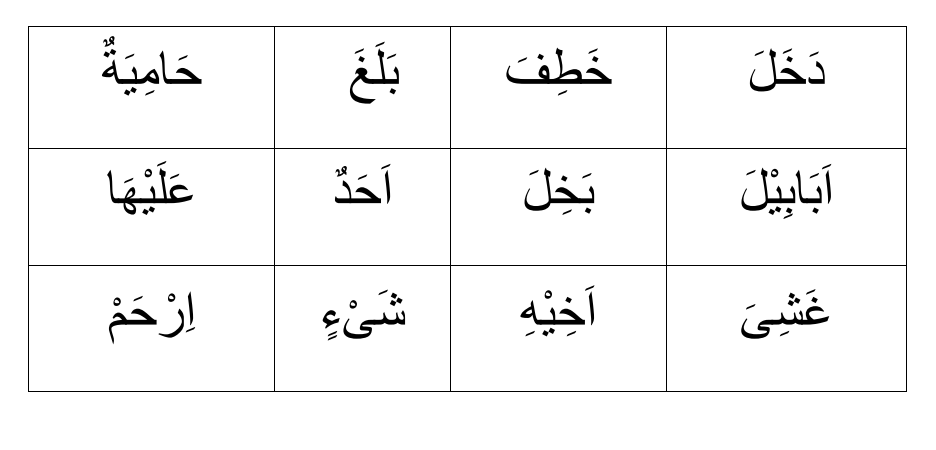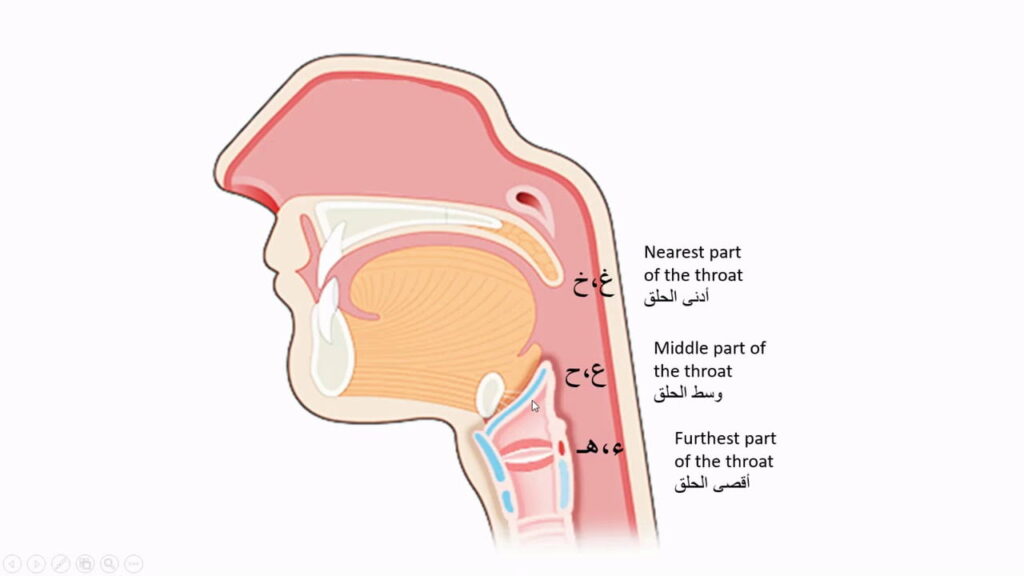Tajweed is essential in ensuring the proper recitation of the Quran. One of its fundamental aspects is the Ahkam An-Noon As-Sakinah wa At-Tanween (Rules of Noon Sakin and Tanween). These rules govern how the letter Noon (ن) with sukoon and Tanween (ً, ٍ, ٌ) should be pronounced when followed by different letters. The correct application of these rules preserves the meaning of the words and enhances the beauty of Quranic recitation.
These rules are divided into four categories:
- Izhar
- Idgham
- Iqlab
- Ikhfa
In this article, we will explore each of these in detail and with examples. let’s get started.
1. Izhar (إظهار) – Clear Pronunciation
Izhar means to pronounce Noon Sakinah or Tanween clearly without any merging or nasal sound. This rule applies when Noon Sakinah (نْ) or Tanween (ً, ٍ, ٌ) is followed by one of the six throat letters.
Throat Letters (HUROOF- E- HALAQI)
The throat letters are:
| Letter | Pronunciation |
|---|---|
| ء (Hamzah) | Read from the bottom of the throat nearest to the chest. |
| ه (Haa) | Read from the bottom of the throat nearest to the chest. |
| ع (Ayn) | Read from the middle of the throat. |
| ح (Haa) | Read from the middle of the throat. |
| غ (Ghain) | Read from the top of the throat nearest to the mouth. |
| خ (Khaa) | Read from the top of the throat nearest to the mouth. |
Examples:

Pronunciation:
Follow the below mentioned image and pronounce these HUROOF- E- HALAQI:

2. Idgham (إدغام) – Merging
Idgham means merging the Noon Sakinah or Tanween into the following letter, making them blend smoothly.
Letters of Idgham
The letters of Idgham are ي، ر، م، ل، و، ن (Ya, Ra, Meem, Lam, Waw, Noon), and they are divided into two categories:
| Type of Idgham | Letters | Example |
|---|---|---|
| Idgham with Ghunnah (nasal sound) | ي، ن، م، و | مِن نِّعْمَةٍ (Min Ni’mah) |
| Idgham without Ghunnah (no nasal sound) | ل، ر | مِن رَّبِّهِم (Mir – Rabbihim) |
Pronunciation:
- If followed by ي, ن, م, و, then Noon Sakinah or Tanween merges into the next letter with a nasal sound.
- If followed by ل, ر, then the merging happens without nasalization.
3. Iqlab (إقلاب) – Conversion
Iqlab means converting the Noon Sakinah or Tanween into a Meem (م) sound when followed by ب (Baa).
- مِنۢ بَعْدِ (Surah Al-Baqarah 2:27)
Pronunciation:
- The Noon sound changes to a light Meem sound with nasalization.
- A small Meem (م) may be written above the letter ب in the Quran to indicate this rule.
4. Ikhfa (إخفاء) – Concealment
Ikhfa means partially hiding the Noon Sakinah or Tanween with a slight nasalization when followed by one of the 15 Ikhfa letters.
Ikhfa Letters
| Group | Letters |
|---|---|
| Group 1 (Strong Ikhfa) | ت, د, ط |
| Group 2 (Moderate Ikhfa) | ج, ش, ص, ق, س, ك |
| Group 3 (Light Ikhfa) | ف, ذ, ظ, ز |
Examples from the Quran
- وَمَنْ تَابَ (Surah Maryam 19:60)
- وَإِذَا قِيلَ (Surah Al-Baqarah 2:11)
Pronunciation:
- The tongue does not touch the articulation point fully; instead, the sound is slightly hidden with nasalization.
- The duration of the nasalization should be around 2 beats.
Comparison of All Four Rules
| Rule | Meaning | Letters Involved |
|---|---|---|
| Izhar | Clear pronunciation | ء, ه, ع, ح, غ, خ |
| Idgham | Merging with the next letter | ي، ن، م، و، ل، ر |
| Iqlab | Converting to Meem sound | ب |
| Ikhfa | Concealment with nasalization | ت, د, ط, ج, ش, ص, ق, س, ك, ف, ذ, ظ, ز |
Conclusion
The rules of Noon Sakinah and Tanween are essential for proper Quranic recitation. These rules ensure clarity, prevent mispronunciation, and enhance the rhythm of recitation. Each rule Izhar, Idgham, Iqlab, and Ikhfa has a specific function that must be applied correctly for a beautiful and precise recitation of the Quran.
By practicing these rules and listening to expert reciters, you can improve your Quranic recitation and follow the way it was revealed to Prophet Muhammad (ﷺ). May Allah (SWT) grant us all the ability to recite the Quran properly. Ameen.


